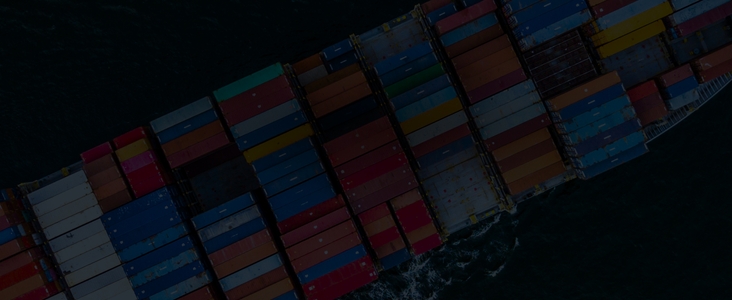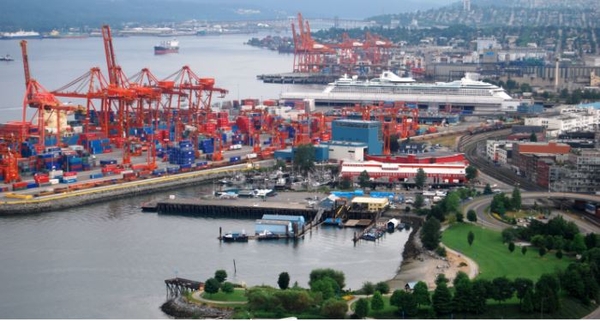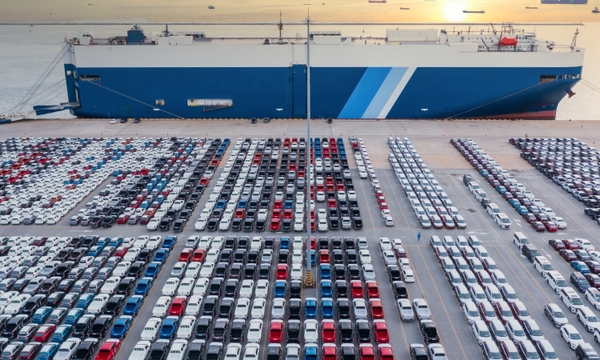
Ocean & Air Freight Shipping to Japan
Get information and quote for FCL, LCL and Air shipping
Computers, medical equipment, and pharmaceuticals are among Japan’s top-ten imports. If your business is one of the thousands already exporting commodities to Japan, or if you’re looking to start, you’ll find this page useful. It’s full of guidance and information that will help you with both ocean and air shipping to Japan for commercial goods.
What Are Your Options for Shipping Freight to Japan?
You can choose between air or ocean shipping to get your goods to Japan. Each has benefits and pitfalls that we’ll outline below.
Ocean Freight to Japan
Less than Container Load (LCL): Your freight can be shipped to Japan in a shared container using LCL shipping. It’s ideal if your consignment is small and can’t be transported as air freight for safety or financial reasons.
Full Container Load (FCL): Your cargo can be transported to Japan in a container that’s exclusively for your use when you use FCL shipping. There’s no obligation to fill the container—you can send a partial load if you wish. FCL is usually quicker than LCL and less expensive if you have a lot of goods to transport.
Air Freight to Japan
Air freight services usually offer the fastest way to ship goods to Japan. Freight forwarders can use passenger services as well as cargo-only carriers to ship your commercial goods. That said, please keep in mind that air freight is the most expensive form of international shipping.
How Much Does it Cost to Ship Cargo to Japan?
The factors that will determine the cost of your shipment to Japan include:
- How far it is from the point of origin to the point of arrival
- The precise nature of the goods you’re shipping
- The weight and volume of your freight
- Your choice of LCL ocean, FCL ocean, or air shipping
- Whether you require a door-to-door, door-to-port, port-to-port, or port-to-door delivery
The weight of your consignment will not only impact the shipping rates you pay—it could also determine the mode of shipping you choose. That’s because for goods weighing over 100 kg, ocean shipping usually works out the most cost-efficient.
If the total weight of your goods is less than 100 kg, there’s unlikely to be much difference between the price of air or ocean shipping. Usually in these circumstances, businesses will choose the fastest option.
For consignments weighing 35 kg or less, you should approach an international courier for a quote, as freight forwarders don’t handle such light loads.
How Long Does it Take to Ship Cargo to Japan?
The two biggest factors influencing transit time for your shipment to Japan are distance, and your choice of air or ocean shipping.
As you might expect, air freight is the faster of the two modes of transport. Shipments from any of the world’s major international airports usually arrive in Japan in two to eight days.
Shipping via ocean carriers is measured in weeks rather than days. If your shipment originates in China, Indonesia, or Australia, you should anticipate a shipping duration between 16 and 31 days. From Europe, however, it’s more realistic to expect goods to ship by ocean to Japan in 38 to 51 days. Shipping from other locations typically takes between 16 and 56 days.
Your choice of LCL or FCL shipping will also impact the amount of time your goods spend in transit.
How Long Does It Take to Ship Cargo by Sea to Japan?
We’ve listed below, some examples of ocean freight transit times to Japan from various ports around the world:
| Country of Origin | Port of Origin | Destination Port | Transit Time LCL | Transit Time FCL |
|---|---|---|---|---|
| Australia | Fremantle | Yokohama | 28 Days | |
| Australia | Melbourne | Kobe | 26 Days | |
| Australia | Melbourne | Tokyo | 23 Days | |
| Australia | Sydney | Nagoya | 30 Days | |
| Australia | Sydney | Tokyo | 27 Days | |
| Belgium | Antwerp | Nagoya | 38 Days | |
| Belgium | Antwerp | Tokyo | 40 Days | |
| Belgium | Antwerp | Yokohama | 40 Days | |
| Brazil | Santos | Tokyo | 56 Days | |
| China | Shanghai | Nagoya | 21 Days | |
| China | Shanghai | Osaka | 16 Days | |
| China | Shanghai | Tokyo | 16 Days | |
| China | Shekou | Osaka | 5 Days | |
| China | Shekou | Tokyo | 5 Days | |
| China | Zhuhai | Osaka | 6 Days | |
| China | Zhuhai | Tokyo | 6 Days | |
| China | Zhuhai | Moji | 8 Days | |
| France | Le Havre | Nagoya | 51 Days | |
| Germany | Bremerhaven | Nagoya | 44 Days | |
| Germany | Hamburg | Nagoya | 44 Days | |
| Germany | Hamburg | Osaka | 44 Days | 50 Days |
| India | Krishnapatnam | Yokohama | 25 Days | |
| India | Chennai | Tokyo | 27 Days | |
| India | Mundra | Tokyo | 26 Days | |
| India | Mundra | Nagoya | 26 Days | |
| India | Mundra | Fukuoka | 30 Days | |
| India | Nhava Sheva | Kobe | 24 Days | |
| India | Nhava Sheva | Tokyo | 26-27 Days | |
| India | Tuticorin | Nagoya | 24 Days | |
| India | Visakhapatnam | Osaka | 29 Days | |
| Indonesia | Jakarta | Fukuoka | 31 Days | |
| Indonesia | Jakarta | Nagoya | 19 Days | 19-20 Days |
| Indonesia | Jakarta | Tokyo | 16 Days | |
| Indonesia | Jakarta | Kobe | 29 Days | 31 Days |
| Indonesia | Jakarta | Yokohama | 17 Days | |
| Indonesia | Semarang | Fukuoka | 17 Days | |
| Indonesia | Semarang | Nagoya | 26 Days | |
| Indonesia | Semarang | Osaka | 46 Days | |
| Indonesia | Semarang | Tokyo | 26 Days | |
| Indonesia | Semarang | Yokohama | 26 Days | |
| Indonesia | Semarang | Kobe | 24 Days | |
| Indonesia | Semarang | Mizushima | 46 Days | |
| Indonesia | Semarang | Moji | 50 Days | |
| Indonesia | Surabaya | Tokyo | 16 Days | 25 Days |
| Indonesia | Surabaya | Nagoya | 18 Days | 31 Days |
| Indonesia | Surabaya | Osaka | 31 Days | |
| Indonesia | Surabaya | Yokohama | 19 Days | |
| Indonesia | Surabaya | Chiba | 25 Days | |
| Indonesia | Surabaya | Fukuoka | 31 Days | |
| Malaysia | Port Klang | Yokohama | 17 Days | |
| Malaysia | Port Klang | Nagoya | 26 Days | |
| Malaysia | Port Klang | Chiba | 12 Days | |
| Mexico | Manzanillo | Tokyo | 41 Days | 20 Days |
| Mexico | Manzanillo | Yokohama | 41 Days | |
| Netherlands | Rotterdam | Tokyo | 40 Days | |
| Norway | Oslo | Yokohama | 51 Days | |
| Philippines | Manila | Kobe | 34 Days | |
| Philippines | Manila | Tokyo | 21 Days | |
| Saudi Arabia | Ad Dammam | Osaka | 40 Days | |
| Singapore | Singapore | Tokyo | 11 Days | |
| Singapore | Singapore | Nagoya | 12 Days | |
| Spain | Bilbao | Tokyo | 42 Days | |
| Spain | Valencia | Osaka | 36 Days | |
| Thailand | Laem Chabang | Kobe | 16 Days | |
| UAE | Jebel Ali | Nagoya | 27 Days | |
| UAE | Jebel Ali | Tokyo | 31 Days | 25 Days |
| UAE | Jebel Ali | Yokohama | 25 Days | |
| UK | London Gateway | Tokyo | 51 Days | |
| USA | Atlanta | Kobe | 35 Days | |
| USA | Los Angeles | Osaka | 30 Days | |
| USA | Long Beach | Tokyo | 30 Days |
How Long Does It Take to Ship Cargo by Sea to Japan?
This table shows the typical time taken for goods to ship to Japan from some of the world’s major airports:
| Country of Origin | Airport of Origin | Destination Airport | Transit Time |
|---|---|---|---|
| Australia | Brisbane | Tokyo | 5 Days |
| Australia | Sydney | Tokyo | 3 Days |
| Brazil | São Paulo | Osaka | 10 Days |
| China | Shanghai | Tokyo | 3 Days |
| China | Qingdao | Osaka | 4 Days |
| China | Qingdao | Tokyo | 2 Days |
| China | Hong Kong | Osaka | 5 Days |
| France | Paris | Tokyo | 6 Days |
| Germany | Dusseldorf | Tokyo | 8 Days |
| Germany | Hamburg | Osaka | 5 Days |
| Germany | Munich | Osaka | 8 Days |
| India | Bangalore | Osaka | 3 Days |
| India | Bangalore | Tokyo | 3 Days |
| India | Delhi | Tokyo | 3 Days |
| India | Mumbai | Tokyo | 3 Days |
| India | Mumbai | Osaka | 3 Days |
| India | Chennai | Osaka | 3 Days |
| Indonesia | Jakarta | Osaka | 6 Days |
| Indonesia | Jakarta | Tokyo | 5 Days |
| Indonesia | Denpasar Bali | Tokyo | 3 Days |
| Indonesia | Denpasar Bali | Osaka | 3 Days |
| Indonesia | Surabaya | Osaka | 5 Days |
| Indonesia | Surabaya | Tokyo | 6 Days |
| Malaysia | Kuala Lumpur | Osaka | 3 Days |
| Mexico | Mexico City | Tokyo | 5 Days |
| Saudi Arabia | Jeddah | Osaka | 4 Days |
| Singapore | Singapore | Tokyo | 3 Days |
| Spain | Bilbao | Tokyo | 5 Days |
| UAE | Dubai | Osaka | 4 Days |
| UAE | Dubai | Tokyo | 4 Days |
| USA | Denver | Tokyo | 5 Days |
Import Customs Clearance in Japan
All international shipments are bound by potentially confusing rules and regulations. So much so that many shippers prefer to hand over compliance management to a freight forwarder. By doing so, businesses reduce the risk of unnecessary delays affecting their shipments, and forwarders will ensure consignments comply with Japanese import customs rules.
Your freight forwarder will still require you to complete important documentation that must accompany your shipment. This will include:
-
A Commercial Invoice
-
A Packing List
-
A Certificate of Origin
-
A Letter of Credit or other payment terms (depends on the contract between the parties involved)
-
A Bill of Lading for ocean freight or Airway Bill for air freight (Shipa Freight will provide this for you)
We’ve included examples of the above paperwork on this documents list page so you can take a closer look. You may be asked to supply additional documents with your shipment, such as a license, permit, and/or certificate.
Ship Ocean Freight to Japan: FCL or LCL?
As a collection of islands, Japan has plenty of seaports ready to receive shipments of commodities from around the world. It’s likely your goods will arrive inside a 20ft or 40ft shipping container aboard a cargo vessel.
You can choose FCL shipping—which will mean you get exclusive use of a container for your goods—or LCL shipping. LCL entails your goods sharing a container with products shipped by other companies.
The size and nature of your shipment is likely to have an impact on whether you choose FCL or LCL ocean shipping.
Less Than Container Load (LCL) Shipping to Japan
You should consider this form of shipping if:
- Your consignment is a small one—less than 14 cubic meters
- Your consignee in Japan does not require the freight urgently
- You’re happy for your goods to be shipped in a shared container
- Your cargo cannot be shipped as air freight
While LCL often works out as the most cost-effective way of shipping small consignments to Japan, there are downsides to be aware of. Not least of these are the logistics necessities known as consolidation and deconsolidation, which occur in the port of origin and port of arrival. These processes sometimes mean LCL shipping involves longer transit times than FCL.
Companies tend to avoid LCL shipping when:
- They’re sending fragile, perishable, or high-value goods
- They don’t want their goods to be moved or handled too much
- They cannot afford delays to their shipment
- Their consignment is particularly heavy or large
- They don’t like the idea of their goods sharing a container with multiple shipments
Learn more about Less than Container Load on our dedicated page on LCL shipping.
Full Container Load (FCL) Shipping to Japan
If LCL ocean shipping doesn’t meet your needs, FCL might. It’s often used by shippers who:
- Have a big consignment to ship—at least 14 cubic meters
- Need their goods to arrive by a certain date
- Need to transport goods that aren’t suited to sharing a container
- Want their container to be sealed before shipment, and for it to remain sealed until it’s received by the consignee
Learn more about Full Container Load on our dedicated page on FCL shipping.
Cargo Ports of Arrival in Japan
Nagoya Aichi
Port Facts:
- Located in Ise Bay on Japan’s Pacific coast
- A major entry point into Japan with connections to 170 countries
- Toyota exports most of its vehicles from here
- The majority of imported goods originate in China, Australia, Qatar, Malaysia, and the USA
Owned By: Nagoya Port Authority.
Annual Container Volume: >2.8 million TEUs.
UN/LOCODE: JPNGO.
Hakata / Fukuoka
Port Facts:
- Located in the north of Kyushu Island in Western Japan
- It’s the oldest natural port in Japan
- The volume of cargo processed here exceeded 19 million tonnes in 2018
- International container imports are processed in the Island City terminal
Owned By: City of Fukuoka.
Annual Container Volume: >992,000 TEUs.
UN/LOCODE: JPHKT.
Tokyo
Port Facts:
- Japan’s largest seaport and one of the biggest in the Pacific Ocean basin
- The harbor covers an area of nearly 5,300 hectares
- Has four container terminals—Oi, Aomi, Shinagawa, and Kamigumi
- Ideal gateway for goods required in Saitama, Kawasaki, Chiba, and other Tokyo Bay locations
Owned By: Tokyo Port Authority.
Annual Container Volume: >4.5 million TEUs.
UN/LOCODE: JPTYO.
Yokohama
Port Facts:
- Situated in Tokyo Bay to the south of the Port of Tokyo
- Honmoku Pier is the main container facility and has 14 berths
- Detamachi is the port’s facility for fresh fruit and vegetable imports
- The Minami Honmoku terminal handles mega container vessels
Owned By: Port and Harbor Bureau of the City of Yokohama.
Annual Container Volume: >3 million TEUs.
UN/LOCODE: JPYOK.
Osaka
Port Facts:
- Located in the south of Japan’s main island
- Is on the delta of the Yodo River in Osaka Bay
- Close administrative links to the Port of Kobe which is located across the bay
- Easy onward transportation of goods to Kyoto, Kobe, and Wakayama
Owned By: Osaka Port Authority.
Annual Container Volume: >2.4 million TEUs.
UN/LOCODE: JPOSA.
Hiroshima
Port Facts:
- Located in southwest Honshu on the Seto Inland Sea
- The deepest quay in the Chugoku and Shikoku industrial areas
- Convenient port of arrival for goods destined for Hatsukaichi, Otake, and Kure.
Owned By: Hiroshima Port Promotion Association.
Annual Container Volume: >257,000 TEUs.
UN/LOCODE: JPHIJ.
Niigata
Port Facts:
- Located on the coastline of the Sea of Japan
- Divided into East and West districts, with the former being the focus for container traffic
- Situated along several popular international trade lanes, including the Busan Route, Southeast Asia Route, and the China Route
Owned By: Bureau of Port and Airport Development, Niigata Prefecture.
Annual Container Volume: >227,000 TEUs.
UN/LOCODE: JPKIJ.
Chiba
Port Facts:
- Japan’s biggest seaport and second-busiest for cargo traffic
- Located opposite the Port of Tokyo in Tokyo Bay
- Covers a 24,800-hectare site
- Known as the ‘Gateway to Tokyo Bay’
- Serves the cities of Funabashi, Narashino, Ichihara, Sodegaura, Ichikawa, and Chiba
Owned By: Chiba Port and Harbor Office.
Annual Container Volume: Unknown.
UN/LOCODE: JPCHB.
Kobe
Port Facts:
- Situated in the Greater Osaka area
- Serves the Hanshin industrial region
- Infrastructure includes six container terminals and 34 container berths
- Plays an important role in Japanese maritime commerce
Owned By: Kobe Port Terminal Corporation.
Annual Container Volume: >2.9 million TEUs.
UN/LOCODE: JPUKB.
Kitakyushu
Port Facts:
- Also known as Moji Port
- Located almost halfway between Tokyo and Shanghai
- The main seaport serving Western Japan
- Boasts two container terminals
Owned By: Kitakyushu Seaport and Airport Bureau.
Annual Container Volume: >546,000 TEUs.
UN/LOCODE: JPKKJ.
Shimizu
Port Facts:
- Situated in Suruga Bay on Japan’s east coast
- The container terminal accommodates two large vessels simultaneously
- Claims to offer the cheapest dockage fees in Japan
Owned By: Shimizu Port Authority.
Annual Container Volume: >541,000 TEUs.
UN/LOCODE: JPSMZ.
##Air Shipping for Your Freight to Japan
There are other reasons to choose air freight services for your shipping to Japan, other than its speed. For example:
- It’s usually not much more costly than ocean shipping for consignments weighing 35 kg to 100 kg
- It’s suitable for smaller consignments—those occupying three pallets at most
- It’s ideal if you’re shipping valuable goods and want the extra security offered by airlines and airports
Airports of Arrival in Japan
Osaka-Kansai (IATA Code: KIX)
Airport Facts:
- Often called Itami Airport
- Serves the cities of Osaka, Kyoto, and Kobe
- Facilities include two runways and two international cargo zones
- Has good road connections, thanks to its proximity to the Hanshin and Chugoku Expressways
- Receives direct cargo-only flights from many airports worldwide, including those in Thailand, China, Italy, the USA, and Germany
Tokyo-Narita (IATA Code: NRT)
Airport Facts:
- Situated about 60 kilometers east of Tokyo city center
- Handles around 60% of Japan’s international air freight
- It’s the main international hub of Nippon Cargo Airlines
- Receives direct cargo-only flights from many airports worldwide, including those in China, France, Thailand, Taiwan, UAE, and the USA
Ocean and Air Shipping to Japan: Why Choose Shipa Freight?
Shipa Freight makes it easier for all kinds of companies to export to Japan. We’re an online-only freight forwarder with the bulk of our business conducted through our website. It’s a comprehensive platform on which shippers can get quotes, compare prices, book shipments, and track the progress of their freight.
Other benefits of using Shipa Freight to coordinate your cargo shipments to Japan include:
- Our friendly customer service team—available to help you 24/7
- Our meticulous approach to compliance with all relevant rules and regulations
- Our dedication to simplifying shipping, which includes customs clearance services to spare you from the complexities


